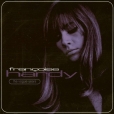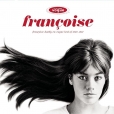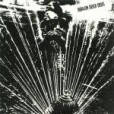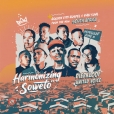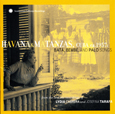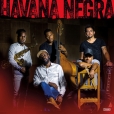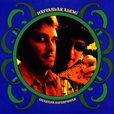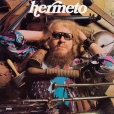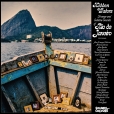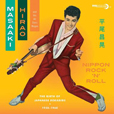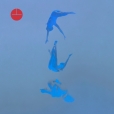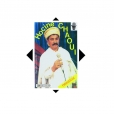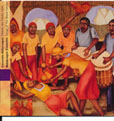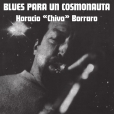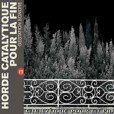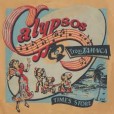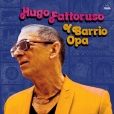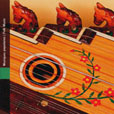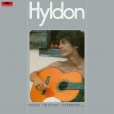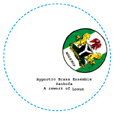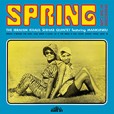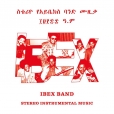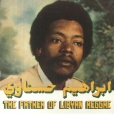Your basket is empty

With a freshness, simplicity and directness missing from his estimable later work, this 1977 inauguration of Fourth World still retains its magic. Microtonality and the other lessons of his three years with Pandit Pran Nath articulate a blend of electric-era Miles, Terry Riley and raga, featuring processed trumpet over a bed of mbira, talking drum, kanjul and tabla, and recordings of the sea, barking dogs, tropical birds and night creatures. From Don Cherry’s imminent, like-minded Codona project, Nana Vasconcelos is in full effect.
Havana And Matanzas, Cuba
Bata, Bembe, And Palo Songs From The Historic Recordings Of Lydia Cabrera And Jo
Folkways
Songs and ceremonies of the Yoruba, Dahomean, and Kongo-Angolan religions, performed by Marcus Portillo Dominguez, Candido Martinez and others, recorded in Cuba in the late 1950s by Lydia Cabrera.
New recordings invoking the grand traditions of Turkish psych with passionate recastings of tripped-out surf, Cambodian rock, Saharan guitar, electric Thai; even a little Sun City Girls post-punk.
‘Eighteen dedications, each hybrid and different, but driven by an utterly personal approach to bebop, Brazilian jazz, Africa and Brazilian roots; thronged with his signature battery of whistles, screams, scales, keyboard, kettles, spoons, squeeze toys, children’s voices, prepared piano and geese calls; with the band adding native instruments like pandeiro, surdo, caixa, apitos, bonecos and agogos, besides saxophones, flute, electric piano, electric bass and so on. Musicians and genres such as Terry Riley, Frank Zappa and Weather Report, Javanese gamelan and Indonesian kulintang come to mind, but there is no real overlap: Pascoal has his own special brew.’
His first recording with his band in fifteen years. “My music is not commercial; it’s not like selling bananas or soap. I’m not in a hurry to record.”
‘Sublime, ethereal minimalism: the first drawing together of Onogawa’s soundtrack compositions, plotting a decade of music for films by cult filmmaker Gakuryū Ishii.
‘Sequenced into an album by Onogawa himself, this retrospective spans a fertile period of collaboration with Ishii, through soundtracks for three remarkable films — August in the
Water (1995), Labyrinth of Dreams (1997), and Mirrored Mind (2005) — where the cinema is texturally and sensually imbued with the spiritual, ambient, dreamlike quality of Onogawa’s music.
‘The sound Onogawa conjures for these films is elegant and patient, often spare or essential in form, but saturated in a strange and otherworldly, poetic emotion and atmosphere. Boundaries are crossed between New Age and science fiction, passing through blissfulness, melancholy, and paranoia, towards enchantments of mood and colour.
‘It’s notable that the compositions on this album straddle the millennium, with a fitting mix of divine and uncertain themes. New listeners might hear links to Mark Snow’s work for the X-Files and Millennium, or the soundtracks of certain future-facing and future-fearing Japanese anime or cyberpunk.
‘Onogawa’s music adds great depth and tenor to the sensory experience of the films themselves, but it stands just as strongly as a listening experience on its own terms; a virtuosic example of Ambient that changes in hue when turned in the light. Remarkably, like Ishii’s films, Onogawa’s work has never been widely available outside of fervid underground fan posts, usually sourced from extremely limited and private CDs limited to Japan.
‘This retrospective seeks to remedy that, presenting Onogawa as one of the great composers of the last three decades.’
Electrifyingly intense Chaoui music from the Aurès region of Algeria, booted into the future, with drum machines, phased gesba flute and reverbed-out vocals.
Possession and funeral songs and drumming, full of Africa, but sustaining its Indian Carib roots.
The French avant-garde quartet, four years in, improvising with instruments from Western, African, Middle-Eastern, and Far-Eastern cultures. Recorded for Futura in 1971, this is their sole album. “We just wanted the sound, the raw sound-texture, before being treated and shaped by any cultural code.”
Irresistible 1950s mento — singalong tunes, ebulliently performed, over-spilling with scandal, smut and impudence, sex, dancing and booze, word-play, jokes and up-to-the minute social commentary, and general love for life.
Following in the footsteps of Bela Bartok across Transdanubia, the Highlands, the Great Plain: marvellous recordings over thirty years of hurdy-gurdy, cymbalum, shepherd’s pipe, bagpipe, popular song.
A landmark blend of MPB, soul, and funk, from 1975.
The landmark 1968 debut recording of pianist Ibrahim Khalil Shihab, aged twenty-two; also featuring terrific young saxophonist Winston ‘Mankunku’ Ngozi, Coltrane acolyte, on the verge of huge acclaim for his LP Yakhal’ Inkomo.
Scandalously, Paypal blocks anyone trying to buy this from us, because of the artist’s Arabic name.
‘The beating heart of the golden age of Ethiopian music, the Ibex Band was the driving force behind such stars as Aster Aweke, Tilahun Gessesse, Girma Beyene, and Mahmoud Ahmed. Led by bassist Giovanni Rico and guitarist Selam Seyoum, Ibex relentlessly reshaped Ethiopian music, blending traditional 6/8 rhythms with Western influences like Motown, and knocking out more than 250 albums, 2,500 songs.
‘Stereo Instrumental Music is a rare gem from this era, recorded in 1976 at the Ras Hotel Ballroom in Addis Ababa.’
